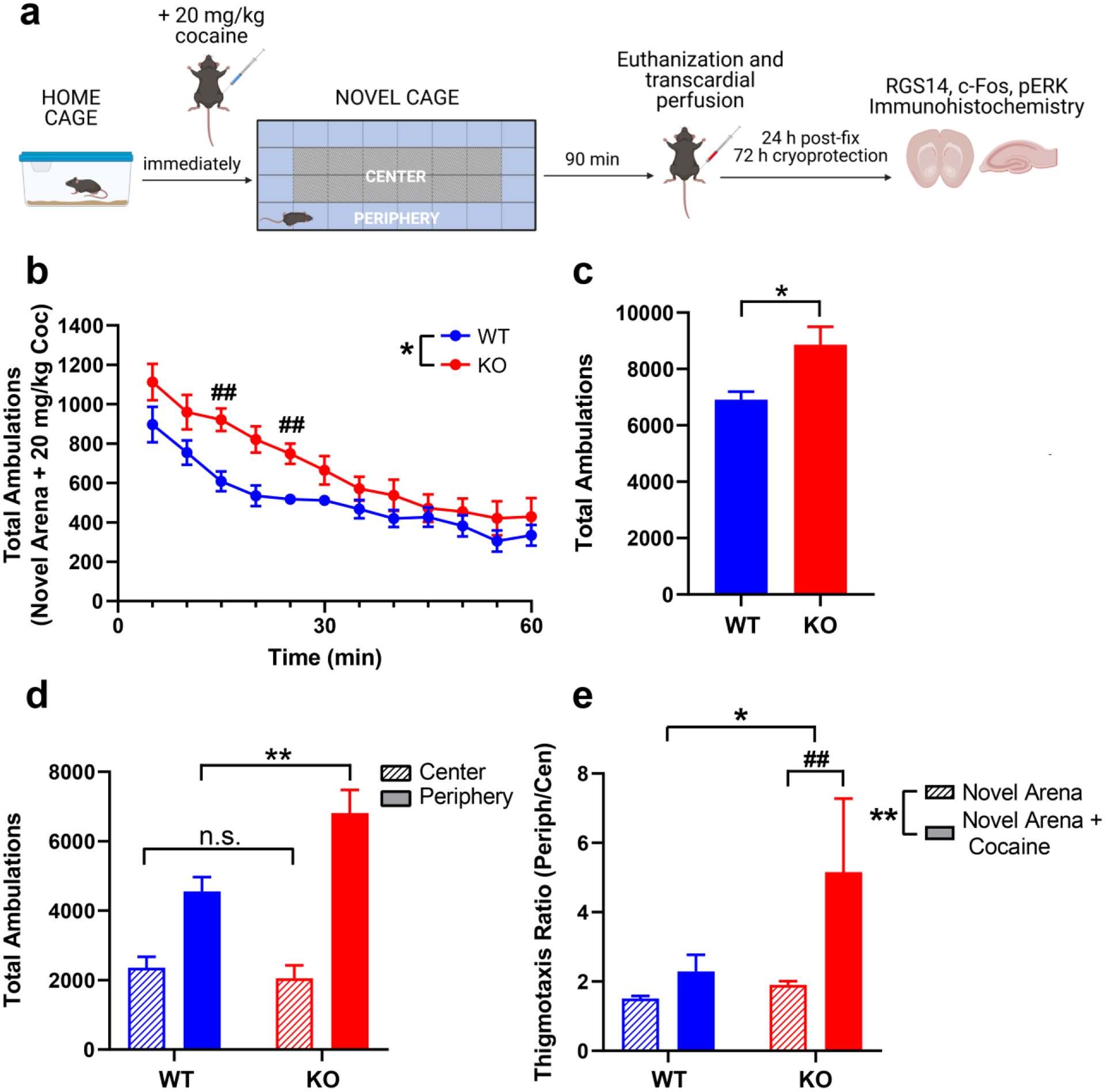Figure 4.

RGS14 KO mice are hypersensitive to cocaine-induced locomotion and thigmotaxis in a novel environment. a Experimental timeline for NIL + cocaine experiment. b Locomotor activity in WT (blue) and KO mice (red) over 1 h following administration of 20 mg/kg cocaine in a novel environment. Ambulations were significantly different between genotypes, with KO mice exhibiting higher activity than WT at 15 and 25 min following cocaine administration. c Cocaine increased total ambulations in RGS14 KO mice (red) significantly more than WT (blue). d Cocaine did not affect central ambulations between genotypes (WT = blue, striped bar; KO = red, striped bar) but increased peripheral ambulations in RGS14 KO mice (red, solid bar) compared to WT (blue, solid bar). e Compared to the novel environment alone, cocaine in a novel environment selectively increased thigmotaxis ratio in RGS14 KO (red), but not WT (blue) mice. n = 7 per genotype. n.s. = not significant, *p < 0.05, ** p < 0.01, ## p < 0.05 by post hoc comparison. Created with BioRender.com.
